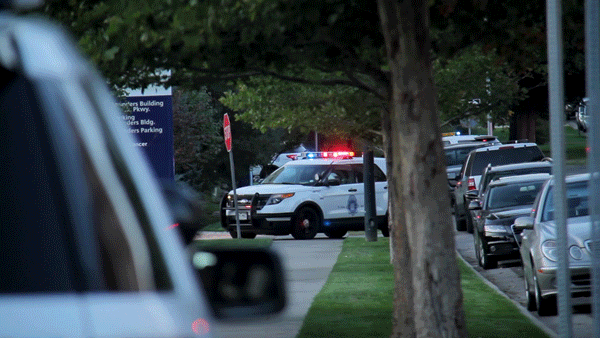A Denver police officer who shot at an armed suspect who also fired at him was legally justified, the District Attorney's Office said Tuesday.
The record of decision, the second released this week, concerns the shooting and wounding of Darius Ratcliff in northeast Denver on July 31.
Ratcliff is the suspect in a November 2015 murder in the Baker neighborhood. At the time that he was shot this summer, a warrant had been issued for his arrest more than six months before, but he had not been apprehended.
But the events that led up to Ratcliff's shooting and arrest actually started with a different murder in LoDo in the early morning hours of July 30, 2016. Police believed that killing was gang-related and were concerned that rival gang members might take retaliatory actions at a vigil planned for the victim.
According the report from the DA's office, officers were told during roll call on July 31 to keep an eye out for a maroon Chrysler with Texas plates. The car was potentially associated with other shootings in northeast Denver. Later that evening, police officers spotted just such a car near 40th Avenue and Colorado Boulevard.
Police followed the car, which turned off its lights, made several turns, sped up and then came to a stop in the 3500 block alley between North Oneida and North Olive streets. A man ran away from the car and police officers gave chase, they told investigators.
Officers eventually cornered Ratcliff, who had been the driver of the car, against a chain link fence between two houses in the 3300 block of Olive Street. Police officers told investigators they heard the sounds of someone climbing the fence and the sound of someone racking a gun.
According to the report, Officer Joseph Stadler had a weapon-mounted flashlight and saw Ratcliff partially caught on the fence. Stadler said he ordered Ratcliff to, “Get on the ground!" and said, "Let me see your hands! Let me see your hands!”
Stadler said he was aware that other officers were approaching as he heard the racking sound.
Here is what he told investigators:
He starts comin’ up and pointing the gun at me and, at that point, you know, I’m, I’m thinking, man, I don’t know if he’s, if he’s gonna shoot me or shoot Off. Arthur or, or, you know [Cpl. Antonson] at that point. I’m, I’m scared you know. I’m scared for my life. I don’t, I don’t know what’s gonna -- it’s all happening real quick.
And, and so he comes up and he’s, -- points the gun my directions and simultaneously I, you know, I heard he, he shoots. But it was right when I en-engaged and squeeze my trigger. So, it was almost simultaneous that if felt that [sic] he shot at me and right as I engaged him. And so, I, I fired my service pistol numerous times. I think probably, maybe like six to eight times.
Stadler told investigators that he saw Ratcliff "slouch over and fall down."
Ratcliff was shot once in the abdomen. He was treated at Denver Health and released to authorities. No one else was wounded.
Ratcliff faces almost 30 charges, included murder related to the Baker killing and attempted murder of a peace officer related to the July 31 shooting.
Investigators recovered eight shell casings that matched Stadler's 9mm Glock 17 semi-automatic pistol and four shell casings that matched Ratcliff's Citadel model M1911 .45-caliber semi-automatic pistol.
Stadler was wearing a body camera at the time of the shooting. It corroborates his description of his own movements, but it doesn't capture his point of view during the actual shooting because he was taking cover behind a vehicle that blocked the camera.
District Attorney Mitch Morrissey found that Stadler was justified in using force to stop a suspect he believed to be armed from fleeing and that using less lethal means was not realistic.
"His actions in using his firearm to take Ratcliff into custody were objectively reasonable and, given the facts of this case, the only true option he had – less lethal options are untenable in the situation here presented," Morrissey said.














